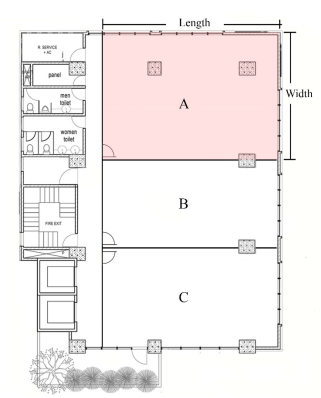Guide to use SewaKantorCBD
Understanding “semi gross”
This section will help you to understand what’s semi gross area without getting too technical. Ever wondered why the area you lease seems smaller than it actually is?
That’s because the area you lease in offices are listed as semi gross. There are three types of areas: (1) Gross area, (2) Semi gross area and (3) Net area.
To understand why there are different types of areas, you first must realize that the space that you use inside a building, is not only the tenant’s area. Other areas that you use outside the tenant’s area, such as toilet, corridor, and pantry, are considered “common area”. Without these common area, tenants cannot operate.

As you can see, if tenant A’s area is calculated as Length x Width, it is unfair because the tenants also use the men and women toilet, as well as the corridor to walk from the lift to tenant A’s area.
The definition of the three areas are as follows:
-
Gross area
Total floor area that is confined by the building’s wall. Areas include lift, emergency staircase, corridor, pantry, toilet, and tenant’s area. In simple terms, it’s the tenant’s area plus common area, including vertical penetration, or simply “all of the building’s area”.
-
Semi gross area
Semi gross is the gross area minus vertical penetration such as lift, ventilation, and emergency staircase. In simple terms, it’s tenant’s area plus common area, excluding vertical penetration.
-
Net area
Net area is the area within a tenant’s premises. In simple terms, it’s the area that tenants use, excluding common area.
Different types of real estate uses different area. For example, malls are typically rented in net area. Shop houses (or “ruko”), are typically rented/sold in gross area. Office buildings and apartments are typically rented/sold in semi gross area.
Office buildings have different “efficiency ratios,” as there is a trade off being efficient to the facilities that tenants get. Typically, a building has an 85-90% efficiency ratio. Meaning, 900 sqm of net area is supported by 100-150 sqm of common area, 1500 sqm of net area is supported by 150-200 sqm of common area, and so on.
Keeping this ratio makes sense because as there are more net area, there will be more people working, and hence common area such as toilet will be proportionately added.
Articles you visit recently
No articles yet